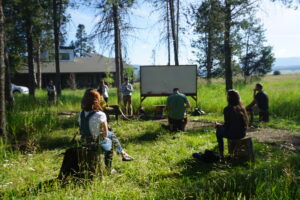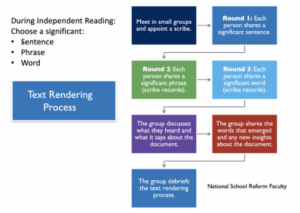Continual Learning and Development – PD30
As we enter into mid-September, the fall semester seems to have hit a stride and learning is in full force. Classes have been digging into material, which has students quickly shuffling from class to class, bowed studiously over homework and posing clarifying questions during lunch. As a school, we sometimes forget that students are not the only ones on a path to betterment and improvement, but that we are all a part of a community of learners.

Each week, Alzar School administration, most often our Director of Studies, Laura Bechdel, offers a PD30 optional course for teachers and staff. Short for “Professional Development” for 30 minutes, PD30s provide a time for Alzar School’s adult learners to acquire and brush up on all types of skills. From instructional practices and assessment techniques to expedition protocol refreshers and etiquette surrounding job references, PD30s are a wonderful resource for faculty.
In last week’s PD30 course, Laura shared a reading comprehension strategy called Text Rendering. Derived from the cooking term “to render”, Text Rendering is the process by which something is clarified by melting away other substances in order to reach its essence. Here is how it works:
- First participants are asked to do an independent reading.

Text Rendering Process. - Next, students choose a sentence, a phrase and a word from the text that is significant to them.
- Convening into small groups, someone is appointed as a scribe, who records after each round.
- Round 1 – each person shares their chosen sentence.
- Round 2 – each person shares their chosen phrase.
- Round 3 – each person shares their chosen word.
- The small group then discusses individual choices and what it says about the document.
- Groups can then share the words and insights that arose during their discussion, as part of a larger whole-class discussion or individual extension activity.
Although seemingly simple, the Text Rendering strategy has lots of applications and can be diversified. English and Spanish teacher, John, pointed out how students could be directed to select a sentence, phrase and word that demonstrates the ‘tone’ or ‘mood’ of a written work in English class. In a Spanish text, Text Rendering could help students identify words or phrases that change the meaning or understanding of a text. Students could use this strategy to craft summaries, understand the author’s purpose, or peer edit by pinpointing sentences, phrases and words that don’t align and may need reworking. Further, Rachel noted that this strategy employs students’ experiences and identities, focusing on student-centered construction of knowledge rather than a simple ‘right or wrong’ answer. As a comprehension strategy, Text Rendering has immense potential for helping students process, collaborate over and demonstrate understanding of materials.
As our Fall 2020 students build upon their academic knowledge, residential skills and technical proficiencies, teachers and staff are also excited to implement new ideas and strategies learned in PD30 sessions and elsewhere. We are a community of learners. We listen, grow, adapt and lead.

